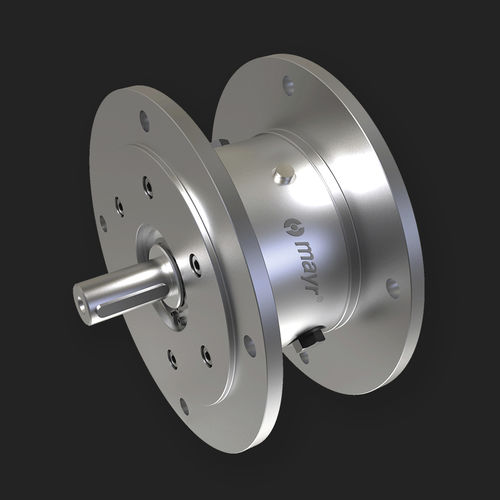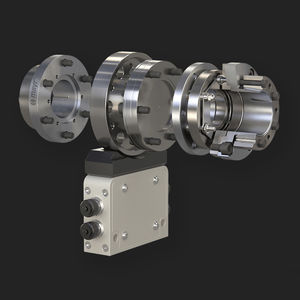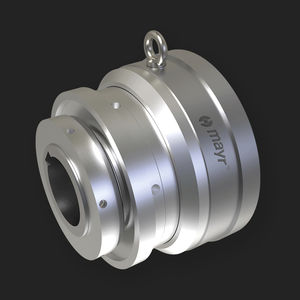
- Power Transmission - Mechanical components
- Mechanical Transmission
- Friction torque limiter
- Chr. Mayr GmbH + Co. KG
- Products
- Catalogs
- News & Trends
- Exhibitions
Safety torque limiter EAS®-HTL friction
Add to favorites
Compare this product
Characteristics
- Operation
- friction
- Other characteristics
- safety
- Torque
Min.: 2 Nm
(1.4751 ft.lb)Max.: 2,400 Nm
(1,770.1492 ft.lb)- Diameter
Min.: 11 mm
(0.43 in)Max.: 80 mm
(3.15 in)- Rotational speed
Min.: 1,500 rpm
(9,424.78 rad.min-1)Max.: 8,000 rpm
(50,265.48 rad.min-1)
Description
The EAS®-HTL is a positive locking, disengaging torque limiting clutch according to the ball-recess principle. The clutch protects the drive train against impermissibly high torque surges which can occur due to unforeseen blockages.
Function at disengagement / synchronous
If the set torque is exceeded (overload condition), the clutch disengages and a residual torque of approx. 5 - max. 15 % of the set torque is applied. After removal of the overload, the clutch automatically engages in the detent position.
Function on disengagement
If the set torque is exceeded (overload case), the clutch disengages. The transmission mechanism is completely disengaged, only the bearing friction is effective. The clutch must be re-engaged.
Product features
Application
✓ Food technology
✓ Process engineering
✓ Chemical industry
Behavior on overload
✓ load-break
Design
✓ Positive locking
✓ latching
✓ unlocking
Re-engagement
✓ Automatic re-engagement after 360° (synchronous)
✓ Remotely or manually operated re-engagement
Benefits
✓ Backlash-free
✓ Free run out
✓ High power density
✓ High torsional stiffness
Assembly and maintenance
✓ Simple assembly
✓ Low maintenance
✓ Torque adjustment possible
Catalogs
EAS®-HTL
8 Pages
Other Chr. Mayr GmbH + Co. KG products
Couplings and torque/force limiters
Related Searches
- Flexible shaft coupling
- Shafts coupling
- MAYR friction brake
- Flange shaft coupling
- Torque shaft coupling
- MAYR spring brake
- MAYR disc brake
- MAYR electromagnetic brake
- Transmission shaft coupling
- MAYR zero-backlash coupling
- Friction clutch
- Sleeve shaft coupling
- Compact shaft coupling
- Misalignment correction shaft coupling
- MAYR torque limiter
- Electromagnetic clutch
- Disc shaft coupling
- MAYR safety brake
- Industrial shaft coupling
- Maintenance-free shaft coupling
*Prices are pre-tax. They exclude delivery charges and customs duties and do not include additional charges for installation or activation options. Prices are indicative only and may vary by country, with changes to the cost of raw materials and exchange rates.






















